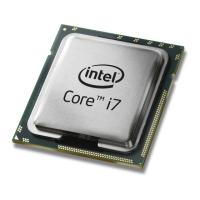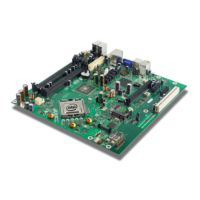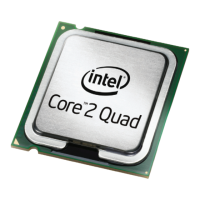Datasheet, Volume 1 39
Technologies
3.1.4 Intel
®
VT-d Features
The processor supports the following Intel VT-d features:
• Memory controller and Processor Graphics comply with Intel
®
VT-d 1.2
specification.
•Two VT-d DMA remap engines.
—iGFX DMA remap engine
—DMI/PEG
• Support for root entry, context entry, and default context
• 39-bit guest physical address and host physical address widths
• Support for 4K page sizes only
• Support for register-based fault recording only (for single entry only) and support
for MSI interrupts for faults
• Support for both leaf and non-leaf caching
• Support for boot protection of default page table
• Support for non-caching of invalid page table entries
• Support for hardware based flushing of translated but pending writes and pending
reads, on IOTLB invalidation
• Support for page-selective IOTLB invalidation
• MSI cycles (MemWr to address FEEx_xxxxh) not translated
— Translation faults result in cycle forwarding to VBIOS region (byte enables
masked for writes). Returned data may be bogus for internal agents, PEG/DMI
interfaces return unsupported request status
• Interrupt Remapping is supported
• Queued invalidation is supported.
• VT-d translation bypass address range is supported (Pass Through)
Note: Intel VT-d Technology may not be available on all SKUs.
3.1.5 Intel
®
VT-d Features Not Supported
The following features are not supported by the processor with Intel VT-d:
• No support for PCISIG endpoint caching (ATS)
• No support for Intel VT-d read prefetching/snarfing (that is, translations within a
cacheline are not stored in an internal buffer for reuse for subsequent translations).
• No support for advance fault reporting
• No support for super pages
• No support for Intel VT-d translation bypass address range (such usage models
need to be resolved with VMM help in setting up the page tables correctly)

